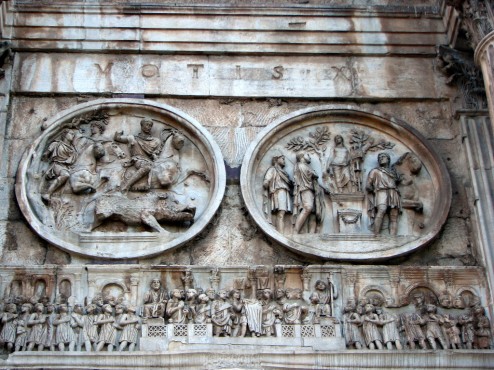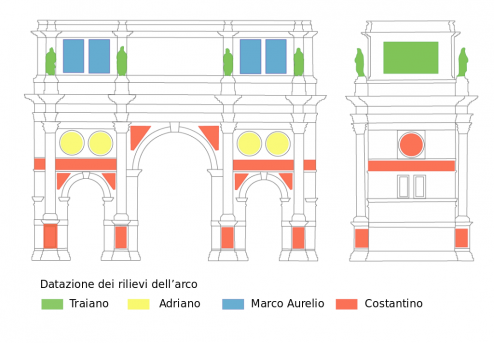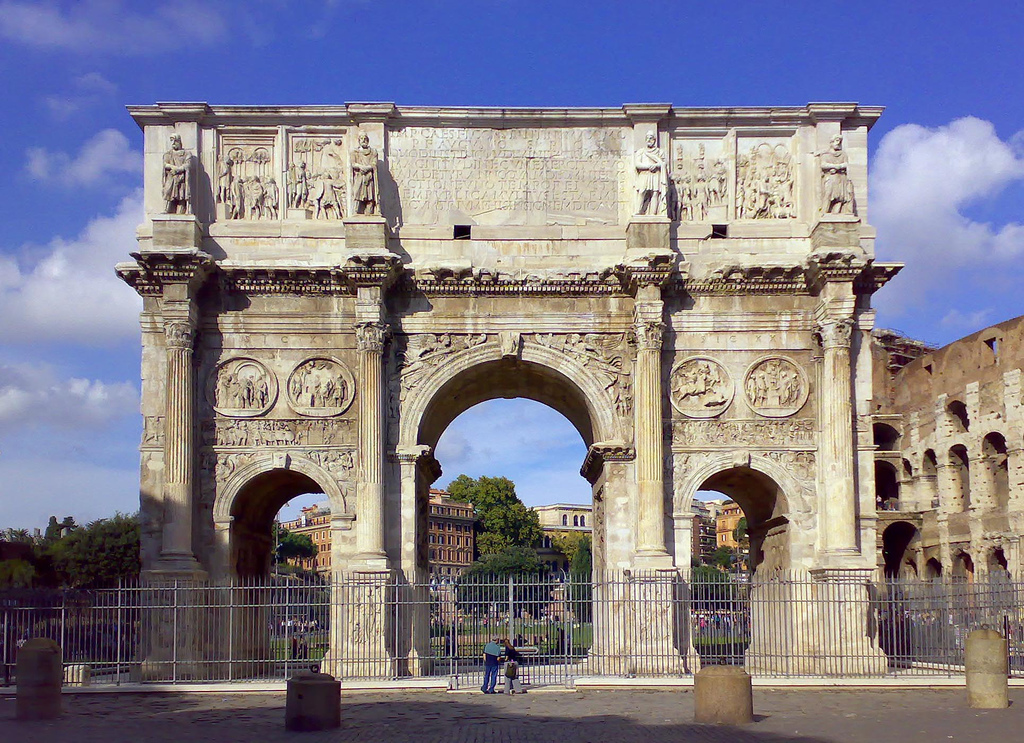Actually, only some of the sculptures are bad… and only compared to others on the same monument. Art historians refer to this as a problem. At the very least, it’s curious.
The Emperor Constantine built this triumphal arch to commemorate his victory against Maxentius on the Milvian Bridge in 312 CE. This victory made Constantine the sole ruler of the Roman Empire and so he built this massive sculpture in the Roman Forum to celebrate not only the outcome of the battle but also to make a statement about his imperial rule.
As was typical for Roman art, the Arch of Constantine is loaded with propaganda. It is decorated with lots of spolia, or stolen sculptures. The tall figures standing near the top were taken from one of Trajan’s monuments, the rectangular panels near them were stolen from Marcus Aurelius’s commission, and the round sculptures near the middle of the arch were taken from something that Hadrian built. Trajan, Marcus Aurelius, and Hadrian were all very successful Roman emperors and so it is easy to understand why Constantine would want their sculptures on his monument.
Less understandable is why the sculpture that Constantine added don’t look as good as the sculptures he stole. Note the detail below of the sculptures by Constantine’s artists in the long rectangular panel that is right underneath the round sculptures created in Hadrian’s day over 175 years earlier. Constantine’s figures are less natural in their proportions and actions.
What is the reason for this? One art historian has suggested that because Constantine was already living in his newly founded capitol, Constantinople (Istanbul, Turkey), by the time these sculptures were carved, all of the best artists had gone there too and so the only ones left in Rome to work on this monument were not so gifted.
Another possibility is that Constantine preferred a new style for his new imperial rule – one that communicated clearly and had a timeless quality – and these sculptures fit the bill.

Detail of The Arch of Constantine, Rome, 312-315 CE, Photo by Nick in exsilio via Flickr, Creative Commons Attribution license.

Datation of The Arch of Constantine (in Italian), Rome, 312-315 CE, Illustration by Marsyas via Wikimedia, Creative Commons Attribution license.
 Detail of The Arch of Constantine, Rome, 312-315 CE, Photo by Nick in exsilio via Flickr, Creative Commons Attribution license.
Detail of The Arch of Constantine, Rome, 312-315 CE, Photo by Nick in exsilio via Flickr, Creative Commons Attribution license.
 Datation of The Arch of Constantine (in Italian), Rome, 312-315 CE, Illustration by Marsyas via Wikimedia, Creative Commons Attribution license.
Datation of The Arch of Constantine (in Italian), Rome, 312-315 CE, Illustration by Marsyas via Wikimedia, Creative Commons Attribution license.

